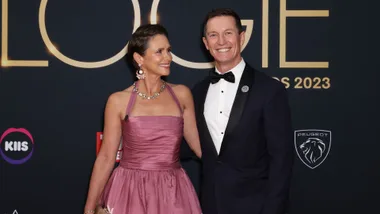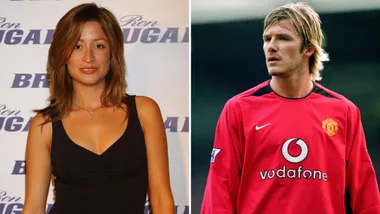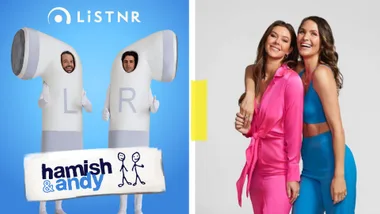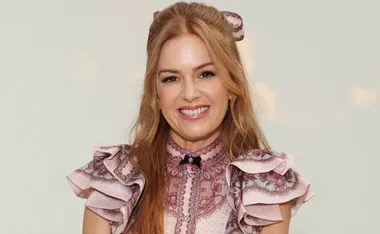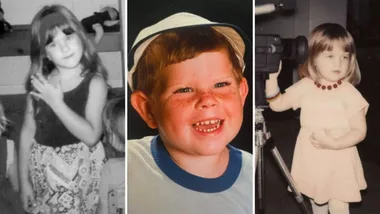Pregnant bellies and a splash of plaster are coming together in country Australia to create a mini health revolution, Bryce Corbett reports.
It’s just after midday in an annexe of the Moree Base Hospital in country NSW. The air is heavy with humidity and the earth under foot is still moist from the region’s worst flooding in decades.
Mosquitoes the size of small birds flit menacingly among the gums. Inside the annexe, kids run about screaming; their mothers sit stoically still, patiently waiting for the plaster to dry on their hands, arms, feet and torsos.
It looks for all the world like a triage ward in your average rural community hospital — albeit a community unusually affected by a spontaneous spate of broken limbs.
Yet there is nothing at all broken about this community of women — proud members, every one, of the Gamilaroi nation of Aboriginal people.
They have come into town to have casts made of their pregnant bellies and, in so doing, play their small, individual roles in a mini health revolution that is rippling its way across the country.
It’s part of a project called Mubali (“swollen belly” in the local dialect) the brain-child of Armidale-based community arts organisation Beyond Empathy.
When its executive director, Kim McConville, was contacted by midwives at Moree Hospital keen to encourage pregnant women from the local Aboriginal population to visit more regularly in the lead-up to childbirth, she and her colleagues conceived the belly casting program.
Women would come to the hospital to cast their pregnant tummies with a view to eventually painting them in collaboration with local artists. Once there, the prenatal care, advice and wisdom of health professionals wouldbe dispensed.
Seven years after its introduction in Moree, Mubali has led to a marked improvement in the birth weight of babies born to local Aboriginal women and created greater awareness of pre- and post-natal healthcare.
It has also spread across the nation, with projects in indigenous communities in Bowraville on the NSW North Coast, Logan on the fringes of Brisbane, Armidale in country NSW and even in the Kimberleys in WA.
On the day The Weekly visited a Mubali workshop in Moree, grandmothers, fathers, children and mums (both expectant and practising) sat around tables plastering, chatting and painting.
Casts of a little girl’s hand cupped in that of her grandmother’s, plaster replicas of babies’ feet and bulbous bellies of late-term pregnant women were all lovingly tended to.
While, in one corner of the annexe, 23-year-old Kathleen “RoRo” Duncan sheltered behind a hessian screen as a team of other mums made a cast of her seven-months pregnant belly, 25-year-old mother of three and three-time belly caster, Cherilda Murray braved the mosquitoes outside to strike a proud pose with her youngest son, six-month-old Jharal.
“I figured if it was good enough for Demi Moore, it was good enough for me,” says Cherilda of the naked posing and belly casting process. “I was a bit nervous and embarrassed at first, but I will never see my body like that again. It’s something to be celebrated.”
Like many Aboriginal mums in the bush, Cherilda’s experience of motherhood hasn’t always been straightforward.
Her partner left her during one of her pregnancies — a development that only spurred her on to embrace it.
“Doing the belly built-up my self-confidence,” she confides. “I finally decided there was no point being embarrassed about being pregnant. A lot of girls are ashamed and won’t go to see a doctor. But it’s natural, it happens.”
For expectant mum RoRo, mother of 14-month-old Shane, taking part in the belly casting is a chance to celebrate a new life and create a unique souvenir. “It’s a good memory for when your baby gets older,” she says, with a shy smile.
According to Jo Davidson, lead artist and coordinator of the Mubali project, transforming the hospital experience has been vital to the program’s success.
“Art works really well as a means of getting pregnant women to come in to hospital,” she explains. “It turns into a neutral, non-threatening environment.”
“Historically, babies were taken away when a pregnant woman from these communities went into a hospital,” says Kim McConville. “And while that doesn’t happen anymore, there was still an historical reluctance that we had to overcome.
“We’ve hit upon the simplest of formulas. Mubali has proven to be as much about young people taking pride in their culture as it is about healthcare.”
No one knows this better than Paula “call me Auntie” Duncan. With her dark mane of hair, imposing stature and ready laugh, the artist and volunteer is a pillar of the Moree Aboriginal community.
She tells me that her mother, Pearl, had 12 children and fostered eight others. All of Pearl’s biological children were born “down by the river”, says Paula.
Mubali, she adds, is a program the manifest benefits of which her late mother could only have dreamed of.
“Traditions and stories are passed from one generation to the next,” Paula says, proudly. “This program has been the nearest thing to being back in a tribe that I have experienced. We’re getting back to a lot of the traditional stuff.”
Female elders of the local Aboriginal community, known as “aunties”, are vital to the Mubali project. Some come to support their daughters or granddaughters, others to sit, paint and remind the girls of their rich heritage.
Either way, a happy side-effect of the program has been the sense of community it has fostered among the different generations who make up the Moree mob.
“We’ve not only encouraged young Aboriginal women to talk among themselves about their pregnancies, but also tap into the generations of female wisdom that exists on their doorstep — sometimes in their living rooms,” says Valerie Quinlin, an Aboriginal artist from Nambucca Heads and a Mubali coordinator.
“The aunties sit and paint the stories of their people onto the bellies. They are literally painting the history of their people onto casts of the next generation. It’s amazing to watch.”
“These bellies represent the future. Across the country, we have helped communities repair themselves,” says Jo Davidson.
Following the first Mubali project in 2004, the painted belly casts were hung in the Moree Plains Gallery and toasted at an exhibition opening attended by more than 250 locals.
One of Cherilda’s bellies was painted by local artist Pauline Briggs-Smith and travelled to Canberra for an exhibition.
Cherilda takes up the Mubali “brag” book and points proudly to a photograph of a dot-covered belly cast. “That’s my belly there,” she says, beaming. “It went all the way to Canberra.”
From a health point of view, the program has also been significant. A greater engagement by mothers at the pre-natal end of baby-making is followed by more participation in mothers’ groups, playgroups and even school groups.
For Annabelle Simpson, a local educator who works closely with both the hospital and the Aboriginal population, the Mubali project has been nothing short of revolutionary.
“The midwives have been able to encourage expectant mums to stop smoking, eat well and look after themselves and their babies,” Annabelle explains.
Back in the annexe, Jo pushes a strand of grey hair from her face with a pair of white-spattered fingers. As the last of the mums and aunties wheel strollers back out into the heat, Kim pauses to take stock.
“We’re not trying to stop young women falling pregnant,” she says. “We are here to make sure they have healthy babies. These are beautiful, sensitive, robust young women who love their babies deeply.
“The challenges they face aren’t always of their choosing and they do the best they can. These women are among the most resilient I have ever met. It’s a gift to be able to work with them.”
For further information on Beyond Empathy and the Mubali project, visit beyondempathy.org.au.
Read more of this story in the January issue of The Australian Women’s Weekly.
Your say: What do you think about the Mubali project?

Video: Preparing your body for pregnancy
One of Cherilda’s bellies was painted by local artist Pauline Briggs-Smith and travelled to Canberra for an exhibition.
Cherilda takes up the Mubali “brag” book and points proudly to a photograph of a dot-covered belly cast. “That’s my belly there,” she says, beaming. “It went all the way to Canberra.”
From a health point of view, the program has also been significant. A greater engagement by mothers at the pre-natal end of baby-making is followed by more participation in mothers’ groups, playgroups and even school groups.

